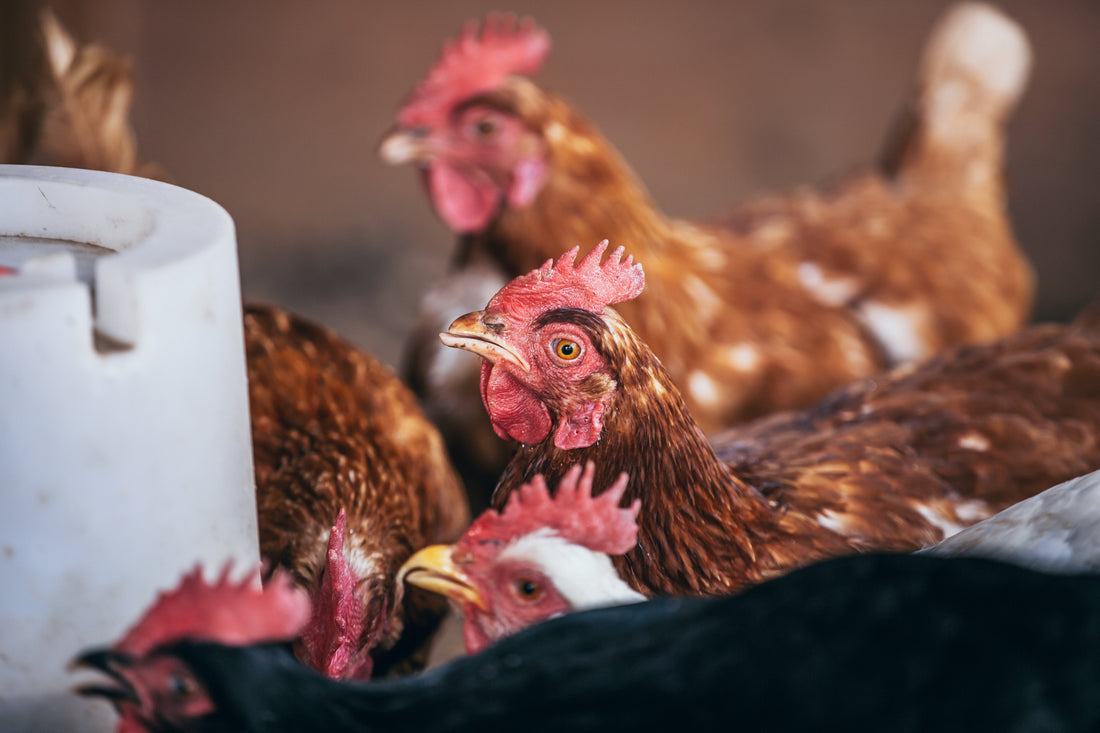
Blue light effectively destroys avian influenza viruses and coronaviruses including IBV
Share
Communication to industry and public authorities, 15th August 2023
Studies have shown that visible blue light can effectively inactivate enveloped viruses. Blue light has been tested against influenza A viruses and SARS-CoV-2 coronavirus [1, 2]. Influenza A viruses and coronaviruses such as IBV and SARS-CoV-2 are structurally similar enveloped viruses.
The Spectral Blue™ disinfection devices, developed by LED Tailor Oy and manufactured in Finland, produce antimicrobial blue light and effectively destroy pathogens from the air and surfaces. When used continuously the devices are able to keep indoor areas free of bacteria, mold, yeasts and certain types of viruses.
Recommended use of Spectral Blue™ disinfection system at a poultry farm
Plug & play blue light devices are placed in the hallway and/or cut-off room of the hen house and pointed towards the floor. The floors are kept clean and shoes are changed or cleaned before entering the hen house.
The device can be on all the time or it can be equipped with a motion sensor. When equipped with a motion sensor, the blue light turns off when a visitor enters the room. For maximal effect, it is recommended to keep the blue light on for as much as possible. Thus constantly exposing any entering pathogens to the blue light.
The blue light devices are available both as floor-standing and as wall/ceiling mounted models.
About IB virus (IBV)
IB (infectious bronchitis) is an infectious lower respiratory disease in birds caused by the IB virus (IBV) which belongs to the group of coronaviruses. The IB virus spreads easily through direct or indirect contact and can also be transmitted by wind from one hen house to another. The virus can be present in chicken feces for 2-7 months. [3]
IB negatively affects the quantity and quality of egg production. The disease weakens the bird's immune system and well-being and causes significant production losses to poultry farms and broiler producers. [3]
The virus is destroyed when heated. The virus can persist in the stool for several months and up to a year in cold and humid conditions. In summer 2023, IB vaccinations were started in Finland to combat the disease. [3]
About avian influenza virus
Avian influenza is an animal disease caused by influenza A virus subtype H5 or H7. Avian influenza infections have been detected in wild birds in Finland and the Nordic countries in summer 2023. There is a risk of poultry contracting the disease and the Finnish Food Authority is monitoring the situation on Finnish poultry farms.
The H5N1 virus has been identified as the cause of the detected infections. H5N1 is a highly pathogenic virus that is easily transmitted from one bird to another. The virus is excreted in inhaled air and feces. The infection spreads between birds, for example, in direct animal-to-animal contact, fecal contact and through contaminated fodder. [4]
The virus can remain infectious for a long period, especially in a cool and humid environment. According to the Finnish Food Authority, it has been found to persist for up to 105 days in sludge and 7 days in manure. The virus is also able to survive freezing. Dehydration and heat destroy the virus. [4]
Orders and additional information
- Karin Henricson, Sales Director, LED Tailor Oy: +358 44 766 9022 / karin.henricson@ledtailor.fi
- Kirsi Saukkonen, Infectious Disease Specialist, LED Tailor Oy: +358 40 631 0916 / kirsi.saukkonen@ledtailor.fi
- Product information: https://spectral.blue
References
- Rathnasinghe, Jangra, Miorin, Schotsaert, Yahnke & Garcίa-Sastre. The virucidal effects of 405 nm visible light on SARS-CoV-2 and influenza A virus. Scientific Reports volume 11, Article number: 19470 (2021). https://www.nature.com/articles/s41598-021-97797-0
- SARS-CoV-2 testi Spectral Blue -laitteella, Helsingin Yliopisto, 2022. https://spectral.blue/pages/laboratory-test-results-with-spectral-blue#sars-cov-2_2022
- Finnish Food Authority, IB information (in Finnish). https://www.ruokavirasto.fi/elaimet/elainten-terveys-ja-elaintaudit/elaintaudit/siipikarja/ib-eli-keuhkoputkentulehdus/
- Finnish Food Authority, Avian influenza information (in Finnish). https://www.ruokavirasto.fi/teemat/lintuinfluenssa/
